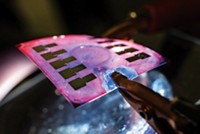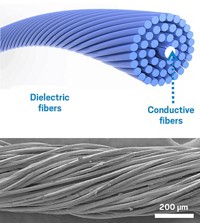Advertisement
Grab your lab coat. Let's get started
Welcome!
Welcome!
Create an account below to get 6 C&EN articles per month, receive newsletters and more - all free.
It seems this is your first time logging in online. Please enter the following information to continue.
As an ACS member you automatically get access to this site. All we need is few more details to create your reading experience.
Not you? Sign in with a different account.
Not you? Sign in with a different account.
ERROR 1
ERROR 1
ERROR 2
ERROR 2
ERROR 2
ERROR 2
ERROR 2
Password and Confirm password must match.
If you have an ACS member number, please enter it here so we can link this account to your membership. (optional)
ERROR 2
ACS values your privacy. By submitting your information, you are gaining access to C&EN and subscribing to our weekly newsletter. We use the information you provide to make your reading experience better, and we will never sell your data to third party members.
Biotechnology
Friction device converts hair frizz to electricity
Hair’s static-electric properties make it an ideal electrode material for triboelectric generators
by Mitch Jacoby
April 16, 2018
| A version of this story appeared in
Volume 96, Issue 16

The same properties that cause hair to become frizzy and flyaway on dry winter days make the material a low-cost choice for generating power (ACS Sustainable Chem. Eng. 2018, DOI: 10.1021/acssuschemeng.8b00136). So-called triboelectric generators convert friction to electricity by capturing energy released when paired surfaces that attract opposite charges move past one another. Recently, researchers have demonstrated that these renewable-energy devices can be incorporated into clothing, walkways, and other familiar objects and thereby power cell phones and other electronics through vibrations and ordinary human motion. A variety of common synthetic materials often serve as the negative side of these circuits. But few positive materials are known. A team led by Jang-Kun Song of Sungkyunkwan University demonstrated that hair readily fills that need. The researchers treated human hair with alkaline ethanol solution, then applied the resulting paste as a micrometer-thick film to indium tin oxide electrodes using various low-tech deposition methods. They paired those positive electrodes with negative counterparts coated with a polyimide film and measured the output produced by tapping on the devices. Proof-of-concept evaluations showed that tapping on the generators a few times produced enough power to brightly illuminate a string of light-emitting diodes, which require just a small fraction of the power needed to light up an ordinary household lightbulb. The devices showed little performance deterioration even after three months of open-air storage.




Join the conversation
Contact the reporter
Submit a Letter to the Editor for publication
Engage with us on Twitter